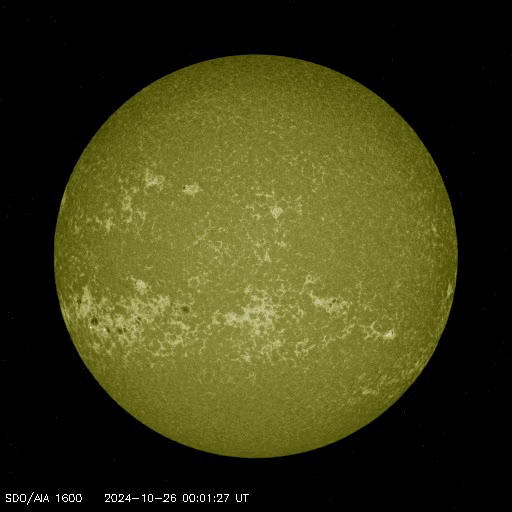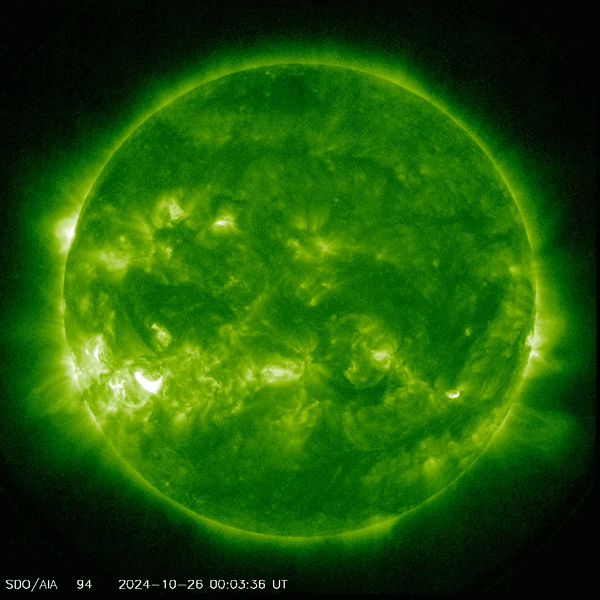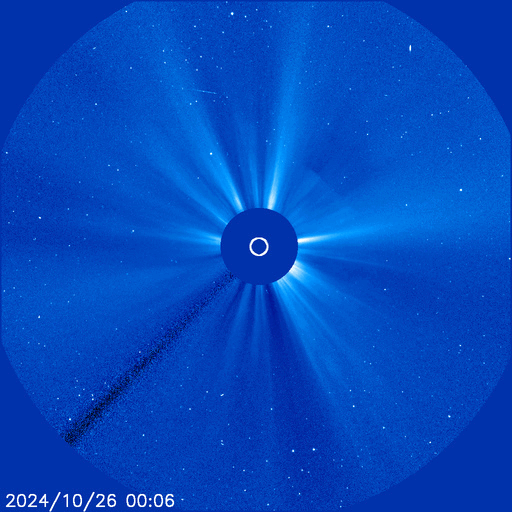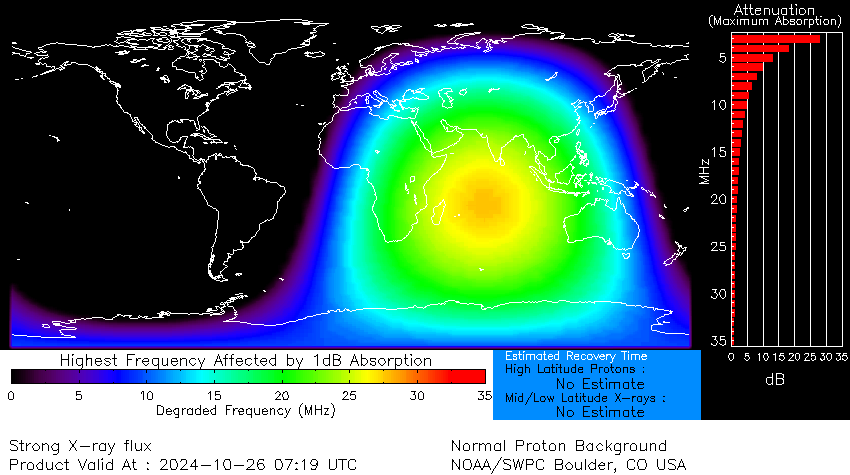An X1.8 flare was observed from NOAA 3873, the most eastern sunspot group of a string of large sunspot regions that is currently in the southeast solar quadrant. The source of this strong flare was clearly different than that of the X3 flare two days ago (NOAA 3869). The long duration X1 flare peaked on 26 October at 07:19UTC (GOES). The clip underneath shows the evolution and location of the flare in extreme ultraviolet images taken by SDO/AIA 1600 (left) and 094 (right). Note that this string of active regions is in the same location as those regions that developed a solar rotation ago, and responsible for the strongest X-class flare so far in SC25 (X9 on 3 October). The AIA 094 images also show an active region at the northeast limb ("upper left') which most likely heralds the return of sunspot region NOAA 3848, the source of an eruption of which the associated CME was responsible for an almost extremely severe geomagnetic storm on 10-11 October.
 |
 |
Coronagraphic imagery show the flare was associated with a asymmetric halo coronal mass ejection (CME). Assessment of the SOHO/LASCO C3 imagery indicate this is a quite fast CME with a true speed around 1600 km/s. A clip of the CME, as recorded by the SOHO/LASCO C3 instrument, can be seen underneath. Preliminary analysis by the SIDC space weather forecaster indicates that, though the bulk of this CME is directed away from the Earth, it seems to have an earth-directed component that may produce a glancing blow on 28 October. Standing-by further analysis by the SIDC forecaster for a more accurate timing and prognosis of the strength of the associated geomagnetic disturbance.

The greater than 10 MeV proton flux continues its modest increase that started in the aftermath of the X3 flare. It is currently at 3 pfu (GOES), with also modest increases for the greater than 50 and 100 MeV proton fluxes (map). The entire radio frequency band was affected for 1 to 2 hours by radio emission from this flaring event (NOAA/USAF). GNSS (GPS, Galileo,...) frequencies were mildly affected (maximum of 1400 sfu), the strongest radio burst was recorded at the frequency of 2695 MHz (solar radio flux) with an intensity of 4200 sfu. The image underneath is a radio spectrogram recorded by the Learmonth Observatory in Australia and showing first a Type II radio burst which is indicative of a CME, followed by a weak Type IV radio burst. For the Humain Radioastronomy Station (Belgium), the flaring event happened just before sunsrise, but the station was still able to catch the Type IV radio burst, which seems to have been quite strong at frequencies between 300 and 1500 MHz (map ; note the reversed and expanded vertical axis compared to the Learmonth spectrogram).

The X-class flare affected the lower frequency portion of the High Frequency communication band (HF Com ; 3-30 MHz) mainly over the Indian Ocean. This can be seen on the D-RAP map underneath (NOAA/SWPC). An advisory to civil aviation has been issued (PECASUS).






